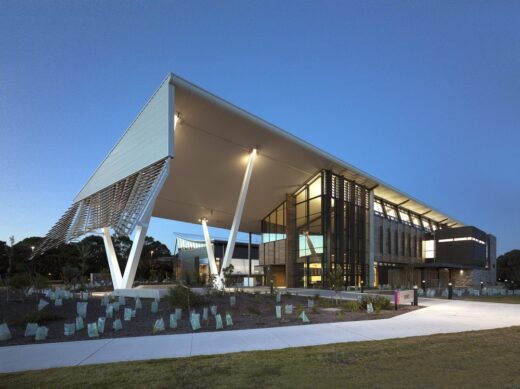Unseen revolution of energy recovery ventilators, Building roofing ventilators energy saving, ERV home temperature regulation guide
The Unseen Revolution of Energy Recovery Ventilators Guide
27 November 2023
Have you ever wondered how our homes stay comfy without wasting lots of energy? Well, here’s the secret: Energy Recovery Ventilators, or ERVs.
An energy recovery ventilator, or ERV, is like a clever machine in buildings. It helps bring in fresh air and controls the temperature inside. Long ago, houses were getting too tightly sealed in cold places like the U.S., Canada, Europe, and Scandinavia. This caused issues with air quality and too much humidity in winter. So, the smart folks came up with the idea of the air-to-air heat exchanger. This gadget solved the problems by bringing in fresh air from outside and warming it up. Nowadays, we call these machines heat recovery ventilators, or HRVs for short.
The Unseen Revolution of Energy Recovery Ventilators – ERVs
What Does an Energy Recovery Ventilator Do?
Energy Recovery Ventilators, often overlooked, play a pivotal role in maintaining indoor air quality without compromising energy efficiency. Beyond simple air exchange, ERVs quietly ensure a fresh, comfortable living space while keeping energy bills in check.
Understanding the Energy Recovery System:
Energy recovery units do more than save heat. They have an excellent part called an enthalpy exchanger that is super advanced. This unique technology not only keeps heat but also moisture from the air.
Imagine it like a superhero gadget – it lets water vapor through but stops bigger things like bad smells. So, it’s pure and clean when it brings in fresh air. These machines are also super good at saving energy. They can handle air (from 250 to 1000 m3/h) depending on the type. That’s like having your air-quality superhero at home!
Difference between an MVHR unit and an energy recovery unit (ERV)
| Aspect | MVHR Unit | ERV (Energy Recovery Ventilator) |
| Main Function | Heat recovery – focuses on saving heat from outgoing air | Energy recovery – saves both heat and moisture from the air |
| Heat Exchanger | Recovers and transfers heat only | Advanced enthalpy exchanger – saves heat and moisture |
| Moisture Transfer | Does not transfer moisture | Transfers moisture, maintaining optimal humidity levels |
| Odour Control | Limited odour control due to the focus on heat recovery | Effectively prevents odours from passing through |
| Suitable Climates | Commonly used in cold climates |
Ideal for both cold and warm climates |
|
Decision Factors |
Primarily chosen for cold weather and energy efficiency | Considered for maintaining humidity balance and efficiency |
| Popular Terminology | MVHR is often known as HRV (Heat Recovery Ventilator) | Commonly referred to as ERV (Energy Recovery Ventilator) |
Types of Recovery Ventilators
Recovery ventilators come in different types, each tailored to specific needs and environmental conditions. Two primary categories are Heat Recovery Ventilators (HRVs) and Energy Recovery Ventilators (ERVs).
- Heat Recovery Ventilators (HRVs):
HRVs transfer heat from the outgoing air to the incoming fresh air. They are particularly effective in colder climates, where preserving indoor warmth is crucial. While HRVs excel at maintaining temperature, they don’t address moisture levels.
- Energy Recovery Ventilators (ERVs):
ERVs take ventilation to the next level by recovering heat and transferring moisture between air streams. This makes them versatile and suitable for both cold and warm climates. ERVs are excellent choices for maintaining optimal humidity levels, contributing to a more comfortable and healthier indoor environment.
Advantages of an energy recovery ventilator
- Keep indoor air fresh and clean, making your home a healthier place to be.
- In winter, when the outside air is dry, it makes sure the indoor air stays comfortably moist (between 40-60%). In summer, it reduces the humidity in the supplied air.
- Saves energy by transferring both heat and moisture between incoming and outgoing air.
- Less water buildup on the heat exchanger, preventing dampness and potential issues.
- Minimizes the chance of ice forming on the plate exchanger, ensuring smooth operation.
- Efficiently handles defrosting with a lower start temperature, optimizing performance.
A Breath of Fresh, Green Air
Energy Recovery Ventilators might not steal the spotlight, but their environmental impact is revolutionary. They’re not just machines but the quiet architects of a greener future. So, the next time you feel that perfect indoor temperature, remember it’s not just comfort; it’s the sweet reward of living in harmony with the planet.
Comments on this Unseen Revolution of Energy Recovery Ventilators article are welcome.
Sustainable Architecture News
Sustainable Building Design
Sustainable Buildings Research Centre, University of Wollongong, Australia – engineered by Cundall:

photo © Richard Glover / Matt Estherby
Sustainable Building News
Climate and Biodiversity Emergency News: Landscape Architects
Eco Architecture
Contemporary Green Architecture Design
Comments / photos for the The Unseen Revolution of Energy Recovery Ventilators page welcome





